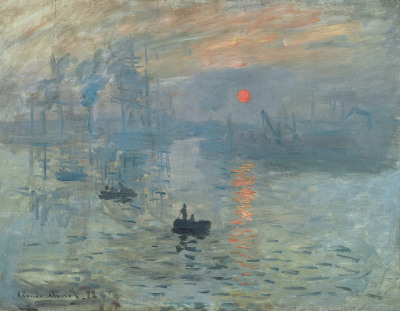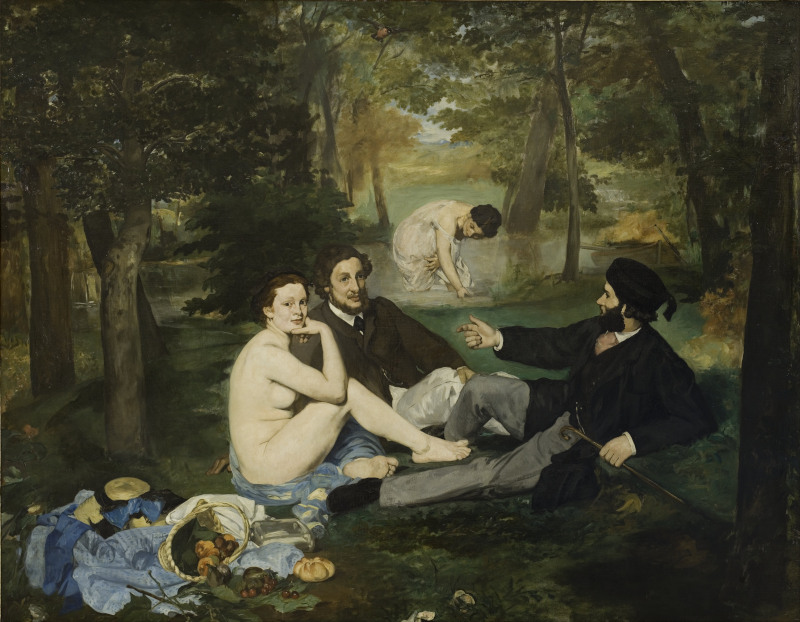Impressionist artists brought a ground-breaking new approach to western art which would heavily influence its overall direction in the 19th, 20th and 21st century.
The likes of Monet, Renoir and Degas faced considerable opposition from the established French art institutions as they attempted to bring attention to their work but ultimately prevailed by organising their own exhibitions. The public found their approach to be fresh and uplifting, and slowly it would replace the more contrived styles which had dominated previously.
This article examines the important aspects of Impressionism, and also lists its main protagonists, including a number of prominent women artists, such as Berthe Morisot and Mary Cassatt. We will learn the principles of the Impressionist movement, the techniques that its famous artists used and also the types of content that they covered in their paintings.
Impressionist Artists: A Guide to the Movement and Its Impact on Art History
The Impressionists continued the artistic transition initiated by the Romanticists but added their own innovations on top. They famously painted outdoors and concentrated on landscape painting, in the main. The movement begun in France, though there were a number of foreign-born artists who joined the group over time, and eventually its impact would spread globally.
In terms of the impact of Impressionist artists on art history, we can survey the art movements which appeared after Impressionism, and many of these were directly influenced by the masters listed in this page. The Post-Impressionists and Expressionists would be the most obvious examples, and these both led on towards modern, abstract art.
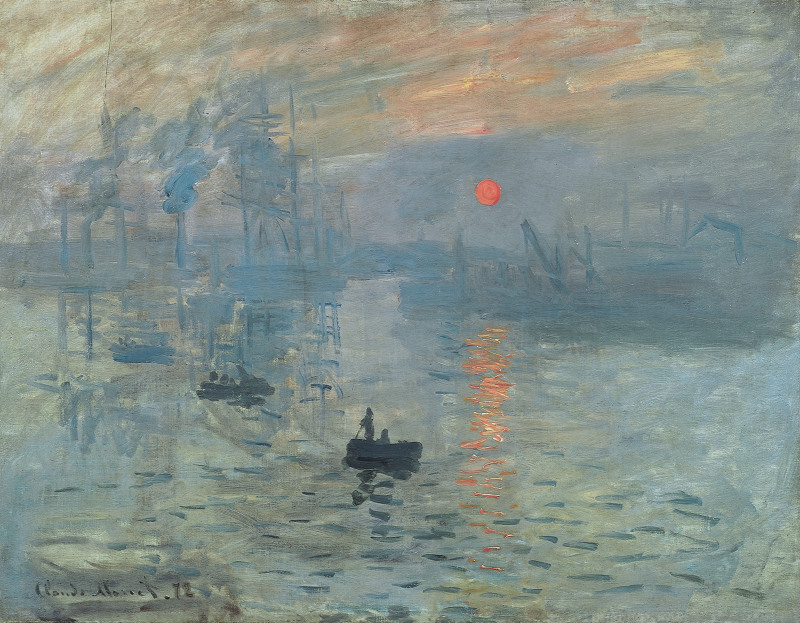 Impressionist Artists - A Guide to the Movement and Its Impact on Art History
Impressionist Artists - A Guide to the Movement and Its Impact on Art History
Famous Impressionist Artists: A Guide to Their Masterpieces and Legacy
The Impressionists are classified by a series of exhibitions that they organised themselves in order to promote their work to the public. Some of their members were there from the very start, whilst others joined on afterwards as the group started to gain momentum. They were an inclusive, open-minded collection of artists who encouraged women to join, which was not in line with the cultural norms of the time.
The list below of famous Impressionist artists concentrates on those whose oeuvres were most closely aligned with what we consider to be the typical characteristics of the Impressionist style. Others, such as Paul Cezanne, were closely connected to the group but their style was too different to consider them a true Impressionist. There were also a number of others that followed on afterwards but were not part of these important exhibitions.
Claude Monet
Claude Monet can be considered the leading light of the Impressionist movement, and his Impression, Sunrise artwork is displayed on this page. That particular piece is how the term of Impressionism was first used, where an art critic rudely described the piece during an exhibition. Louis Leroy's article, "The Exhibition of the Impressionists" suggested the painting to be unfinished, similar to an oil sketch that many artists would produce in the 19th century.
From that point onwards, this loose, relaxed approach to content would be termed Impressionism, and the other members of the group shared a similar approach. It allowed them to work expressively, and to use emotion in their work. It also contrasted with the Academic approach which had dominated French art in recent years.
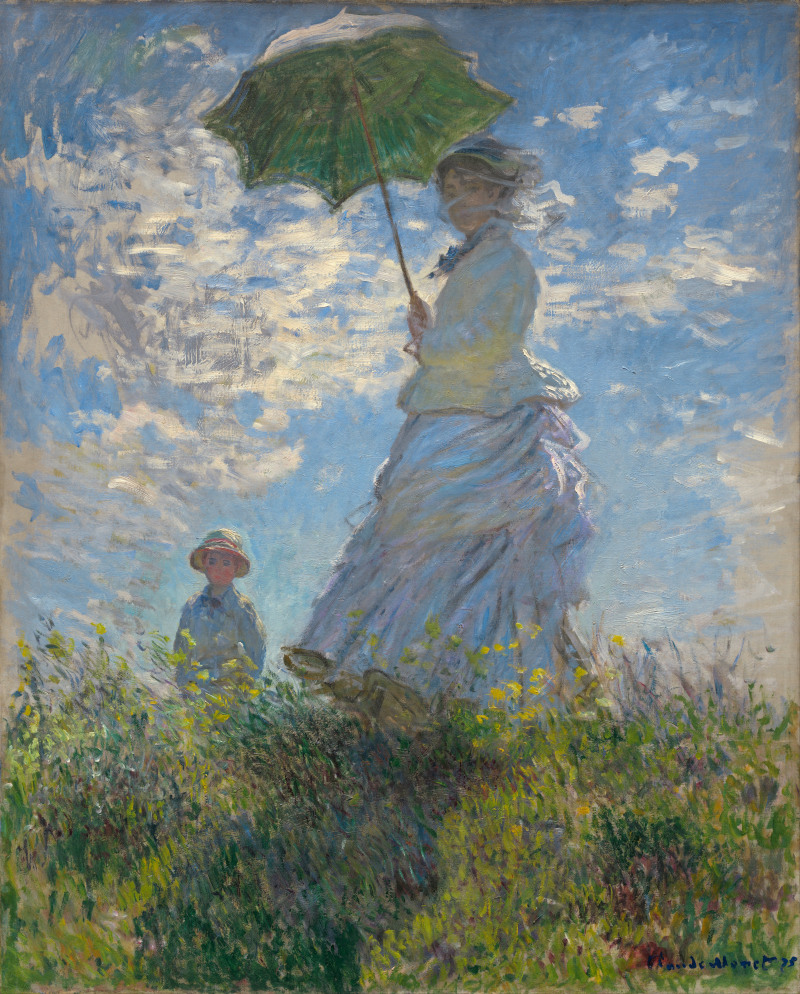 Famous Impressionist Artists - Claude Monet
Famous Impressionist Artists - Claude Monet
Mary Cassatt
Mary Cassatt was an American artist who lived much of her life in France and was therefore able to work alongside her French counterparts. One of the unusual aspects about the Impressionist movement was its inclusion of a number of woman artists, who traditionally had been unfairly treated by the western art world.
Cassatt was a highly skilled American Impressionist, but also was memorable for bringing a different angle to the movement, with a concentration on the relationships experienced by women in society. There were many mother and child portraits, for example, and it was in this genre that she specialised, whilst other members would concentrate on en-plein air landscape scenes.
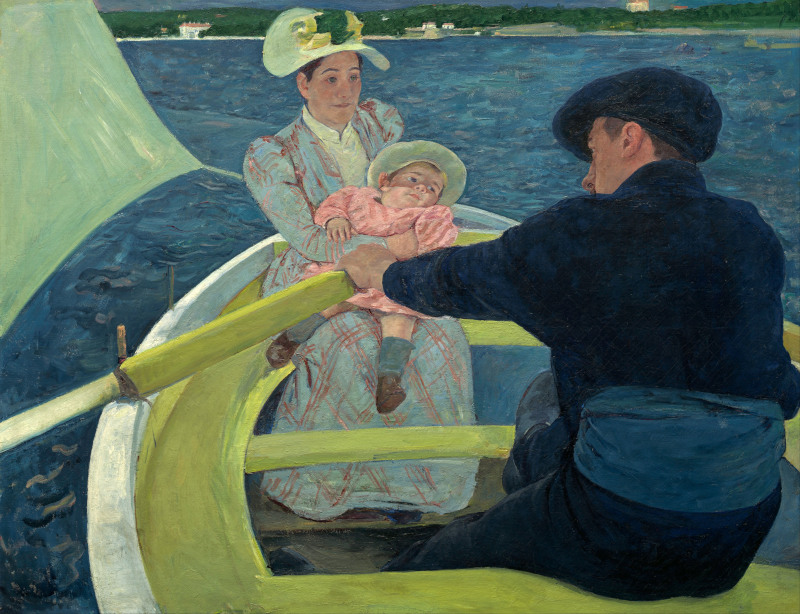 Famous Impressionist Artists - Mary Cassatt
Famous Impressionist Artists - Mary Cassatt
Berthe Morisot
French Impressionist Berthe Morisot was another prodigious talent to have joined the group. She was closely connected to the Manet family and covered similar content to Cassatt. She took the Impressionist techniques to an extreme, with unrefined, loose brushwork which created dreamy depictions of life in the 19th century. Her choices around composition was also innovative and varied, making her oeuvre particularly intriguing.
She was labelled as one of "les trois grandes dames" which grouped together the three main female Impressionist artists, alongside Marie Bracquemond and Mary Cassatt. This was a compliment, and provided recognition of the role of women painters within the group. As interest in female artists has increased dramatically in recent years, this has helped the Impressionists to remain relevant in terms of permanent collections and art exhibitions.
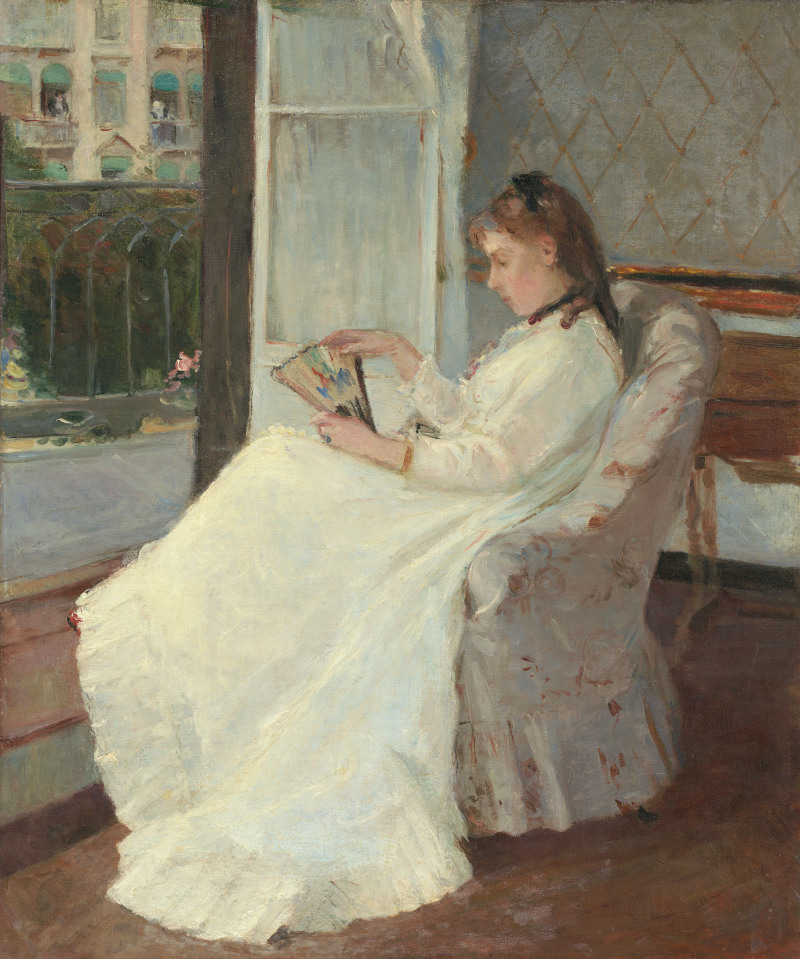 Female American Impressionist Artist - Berthe Morisot
Female American Impressionist Artist - Berthe Morisot
Pierre-Auguste Renoir
Pierre-Auguste Renoir was, first and foremost, a portrait painter of women. He loved to celebrate the beauty of the female figure, and concentrated on it for most of his career. Renoir's artistic style is immediately recognisable, from his use of light, loose brushwork and preference for curved female figures, continuing a tradition that led back to Rubens in the 17th century.
Renoir worked alongside his friend Monet to discover the variations of light on an object in different conditions, which would become a major part of the movement. Whilst being one of the most talented members of the group, Renoir later chose to go his own way in order to implement a greater discipline to his work, which was not consistent with the methods of his colleagues. By that point, however, his impact on the Impressionist movement was already established.
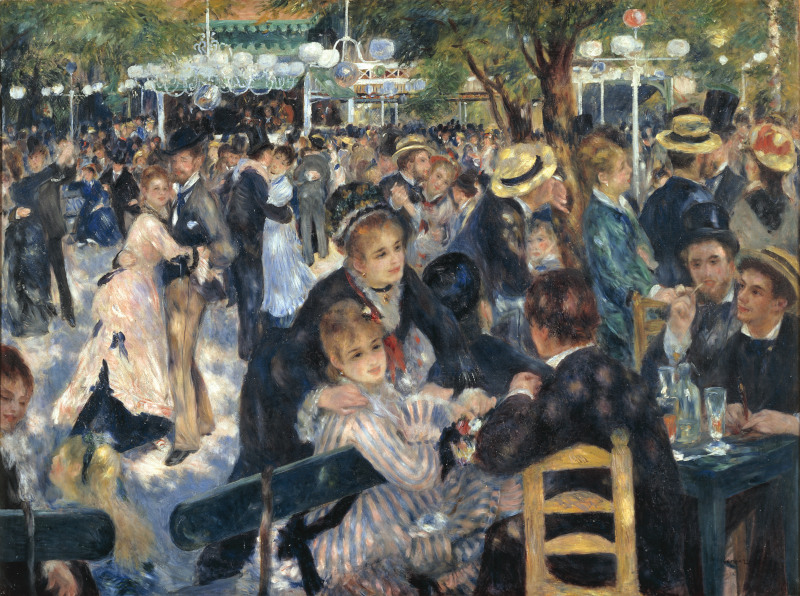 Impressionist Artist - Pierre-Auguste Renoir
Impressionist Artist - Pierre-Auguste Renoir
Edgar Degas
Edgar Degas is best remembered for his ballerina paintings, which capture the beauty of French culture in the 19th century. He worked tirelessly to capture movement within visual art, and even experimented with sculpture at one point in his career. Besides the ballet dancers, there were also many scenes of Parisien life, and also several series based around horse racing.
Besides his focus on oils, which was the most popular Impressionist medium, Degas also mastered pastels, which enabled him to work in different settings without having to carry large easels and materials with him as he went. Degas experimented with composition cropping, where his content would be abruptly cut off and this suggested the influence of Japanese art prints.
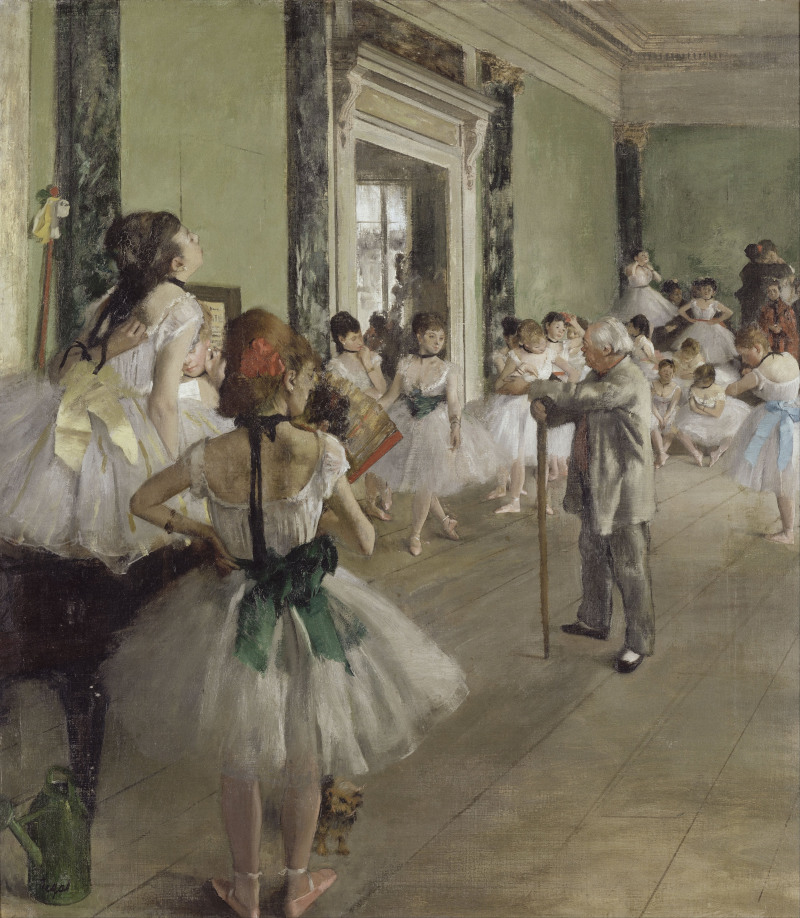 Famous Impressionist Artists - Edgar Degas
Famous Impressionist Artists - Edgar Degas
Camille Pissarro
Camille Pissarro was a significant Danish-French painter who transitioned from Impressionism to Neo-Impressionism. The artist specialised in landscape scenes, but also produced some memorable city scenes, such as his series in Paris which captured the beauty of Paris' boulevards, including Boulevard Montmartre at Night.
Pissarro would also experiment with small dabs of paint dotted around his scenes, which together would form each element, when viewed from a distance. This approach became known as Pointilism, and was famously used by Georges Seurat in classic works such as A Sunday Afternoon on the Grand Jatte and Bathers at Asnieres.
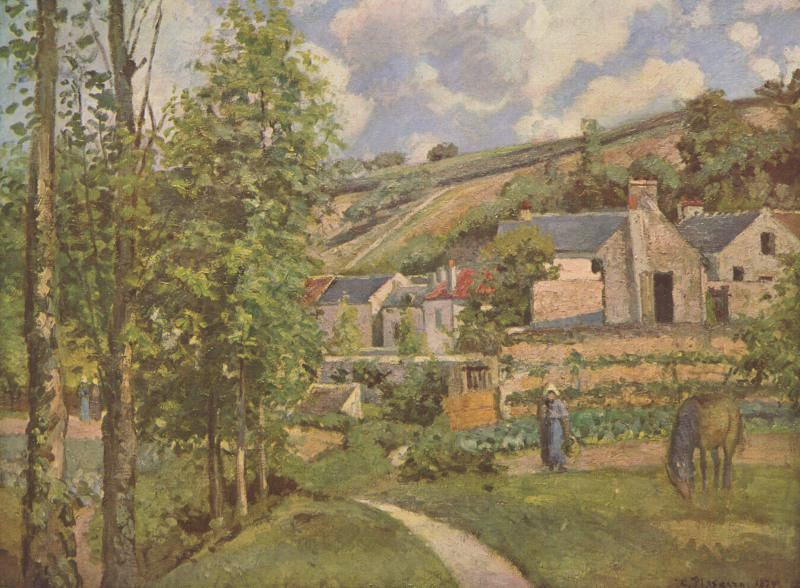 Impressionist Art - Camille Pissarro
Impressionist Art - Camille Pissarro
Alfred Sisley
Alfred Sisley was the sole British contributor to the French Impressionist movement, though he spent most of his life in France. Sisley focused on landscape scenes and also regularly captured the changing seasons, including a number of French Impressionist winter paintings. Passing rivers, including the Seine and the Thames, would also feature regularly in his work.
Some considered Sisley to have followed other Impressionist artists, rather than leading the way himself, but his role was still highly significant. He also helped to spread its style into the UK, where he worked on a number of extended visits. He sought French citizenship but was unable to acquire it before passing away prematurely.
Gustave Caillebotte
Gustave Caillebotte combined elements of Realism and Impressionism to produce a number of charming, innovative portrayals of life in 19th century Paris. He captured the reality of life for the working class, as well as upper society, and his technique was more precise than the standard approach found within Impressionism, which brought him criticism and praise in equal measure.
Another unique aspect to his work was the use of high perspective, looking down on the streets of Paris from several floors up. He even captured the rooftops of Paris, finding beauty in ways not seen before. He was based in the city for much of his work, contrasting with the landscape scenes that filled much of the Impressionist output. Much of the focus on Caillebotte today is based on the success of a few individual works, rather than his entire oeuvre.
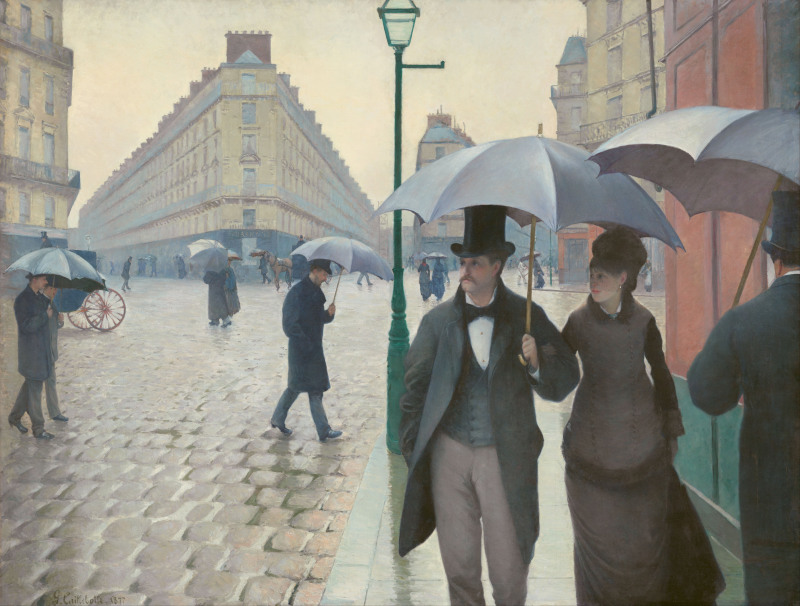 Famous Impressionist Artists - Gustave Caillebotte
Famous Impressionist Artists - Gustave Caillebotte
Frédéric Bazille
Frédéric Bazille produced one of the most varied oeuvres, capturing figurative portraits and landscapes in large numbers. He was particularly famed for his handling of colour, but he also played an important role in financing some of the other members of the Impressionist group. He considered them friends (they would even feature in each other's paintings), and his wealthy background allowed Bazille to back the movement financially, whilst also promoting his own work.
Sadly, much of Bazille's impact was stunted by his early death, whilst only in his late twenties. Despite that, he still had produced many significant works by that point and his legacy was therefore established. By that point his style was becoming more precise and perhaps less impressionistic, with a transition into Realism potentially on the cards.
Édouard Manet
Édouard Manet was a major influence within the Impressionist movement, and his career highlights remain amongst the most famous Impressionist paintings of all. His compositions were varied, going far beyond the standard Impressionist landscape paintings. Figurative work, both male and female, was frequent, and there was also a number of complex works with large groups of people.
Manet learned to paint in a Realism manner, but slowly transitioned into the freer approach of the Impressionists, just as Bazille would do, but in the opposite direction. Manet was close friends with his colleagues and was highly respected within the group as a skilled technician with an innovative, imaginative approach.
Eva Gonzalès
Eva Gonzalès was a key pupil of Edouard Manet and became one of a number of successful female painters who worked in the Impressionist manner. She focused on women within her work, and was able to get close to each sitter in a way which was not possible for male painters. She was skilled in landscape and seascape painting, but most of her oeuvre was based on portraiture.
Her work has often been overshadowed by the success of the "les trois grandes dames", but in recent years there has been a number of exhibitions which have promoted her achievements. Her connection to Manet has also made it easier to drum up interest in her work for those with only a fleeting knowledge of the Impressionist era.
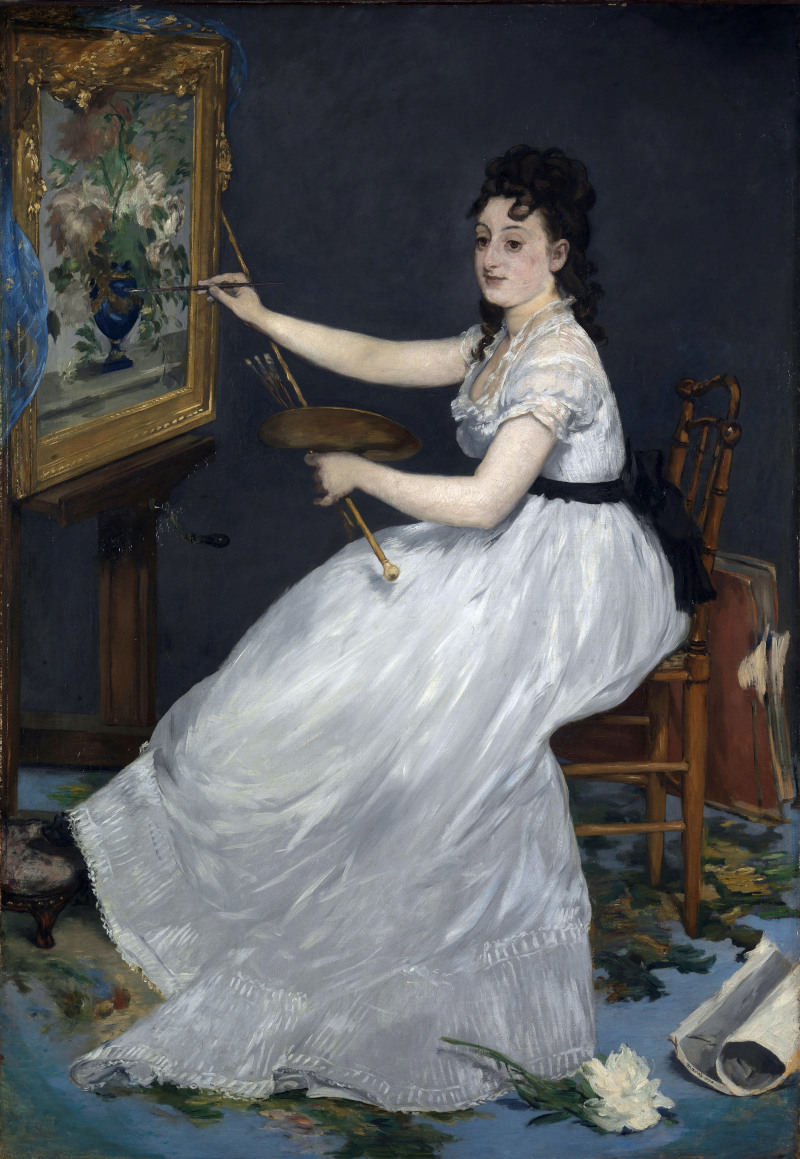 Famous Impressionist Artists - Eva Gonzalès
Famous Impressionist Artists - Eva Gonzalès
Marie Bracquemond
Marie Bracquemond exhibited in a number of Impressionist exhibitions, having joined the group in around 1879. She had initially received direction from Ingres, and was accomplished in other artistic styles but chose to work in the Impressionist style as her career progressed. Her use of female-centric content was well established within the group and she felt comfortable working and exhibiting alongside its existing membership.
French high society inspired much of her work, with scenes of wealthy women relaxing in garden scenes being particularly common. There has been an increased focus on female Impressionist artists in recent years, bringing Bracquemond's paintings to a wider audience, particularly so through a series of high profile European art exhibitions at a number of major art galleries and museums.
Armand Guillaumin
Armand Guillaumin exhibited in six of the eight Impressionist exhibitions, and also became close friends with a number of his colleagues. He ran a popular studio in which other artists would congregate and he was also very familiar with a number of painters from outside the Impressionist movement. A surprise lottery win enabled him to work as a full time artist.
Guillaumin specialised as a landscape painter, and worked in and around the Paris region. Many of his paintings bear similarities with the work of Monet, including a number of haystack studies. There was also the same use of light and conditions, which varied from one work to the next as he sought to learn and experiment through his paintings.
The Birth and Development of Impressionism: A Historical Context
Academic art had dominated French art leading up to the 1860s, but it was at this time that a new breed of artists sought to move things in a new direction. Claude Monet, Pierre-Auguste Renoir, Alfred Sisley, and Frédéric Bazille worked under artist Charles Gleyre and found a collective agreement on how art should be, both in terms of technical style but also in the types of content that they covered.
The birth of Impressionism involved this artist collective forming exhibitions of their own, where they could safely show off their work without interference. There would be eight exhibitions in total, with a number of other artists joining the fold. The initial focus was on landscape painting, often produced whilst working outdoors, as well as scenes of life in Paris. This would be expanded over time, with a number of female painters helping to broaden the scope of this group.
As the years progressed, a clear Impressionist style became clear, though some members of the group also incorporated inspiration from other movements. Some of their work was influenced by the great Romanticist artists, and it was clear that the alternative approach of the Academic artists was now starting to fall from favour, leaving room for the Post-Impressionist era.
The Impressionist Style: Key Characteristics and Techniques Explained
The key characteristics of Impressionist art were the use of light, loose brushwork, a bright palette of color, the depiction of movement within each scene, and also a focus on everyday life. These ideas contrasted with the pre-1860s techniques which focused on mythological or religious content in a relatively formal manner. Expression and creativity were heavily promoted within the Impressionist art movement.
One could also better understand the personality of each artist within this novel approach, whereas Realism artists would essentially attempt to replicate reality, as would Academic artists. With similar training being given to each member of these French institutions, their approaches would merge and leave little difference from one artist to the next. The Impressionists caused the Realism art movement to fall out of fashion, but its popularity has returned in recent years, because of the impressive technical skills of its members.
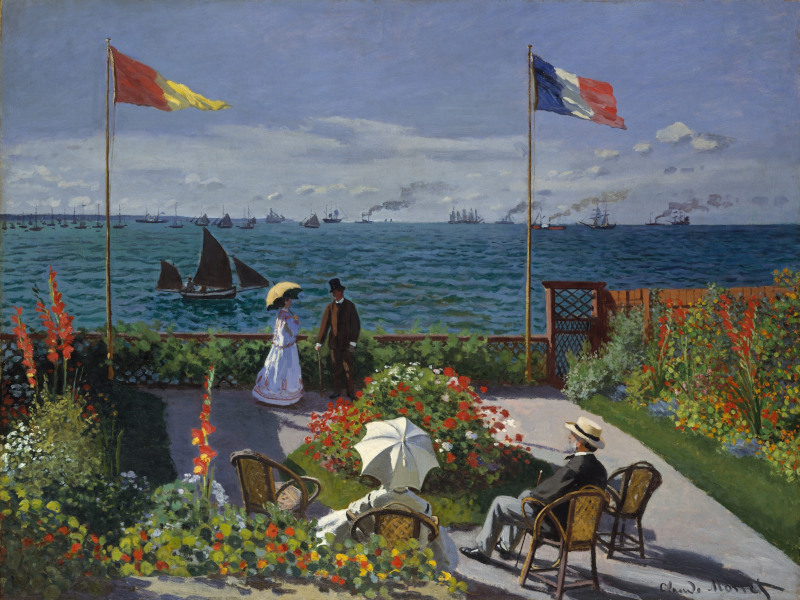 The Impressionist Style - Key Characteristics and Techniques Explained
The Impressionist Style - Key Characteristics and Techniques Explained
Color and Light in Impressionist Art: Why It Matters
The use of en plein air techniques, where artists worked outdoors, allowed them to observe and depict movement within their landscape scenes. This brought the French countryside to life, and showed an influence from British Romanticist art, from the likes of Turner and Constable. The Impressionists evolved some of these ideas, promoting near obsessive periods of study in which the same objects might be captured many times over, at different times of the day, and in different weather conditions.
Light had been experimented with by artists for centuries, such as with the dramatic scenes from Caravaggio and Rembrandt. The Impressionists used these ideas with the landscape genre, which had been an undervalued genre until the rise of the Romanticist movement. These experiments brought a brighter color palette into the Impressionist era, and this immediately struck a chord with the public, who ignored the criticism that initially came their way from the established art institutions.
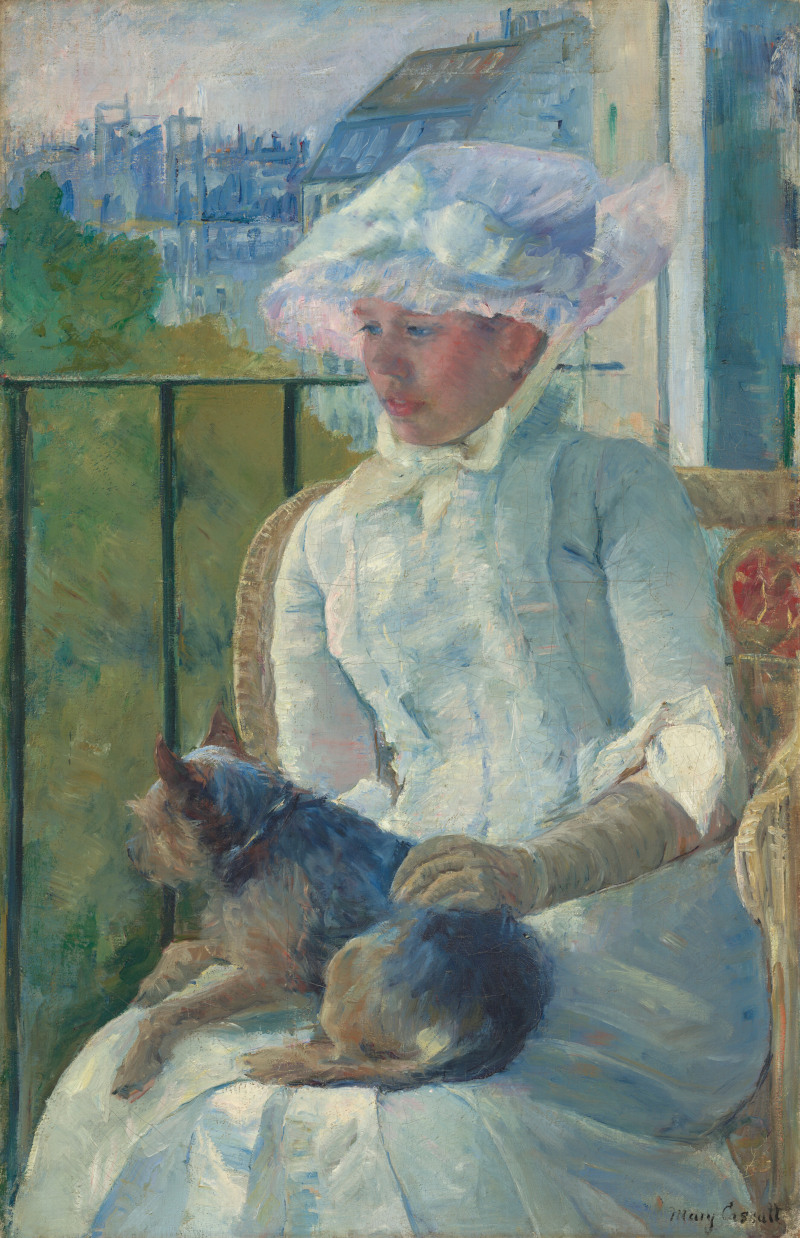 Color and Light in Impressionist Art - Why It Matters
Color and Light in Impressionist Art - Why It Matters
Brushwork and Composition in Impressionist Paintings: Creating Movement and Energy
The loose brushwork used by the Impressionist artists, to differing degrees, helped to convey a feeling of activity and movement. The most obvious example of this would be in Degas' ballerinas, who stretched and contorted across each canvas. The blurred outlines reproduce a feeling of seeing something live, and similar can be said for Pissarro's top down city scenes from central Paris.
Japanese art had a large impact on French artists in the 19th century and one of the biggest influences was in their use of composition. Cropping and unusual methods of composition started to appear, moving away from the rigid formulas taught in academic circles. This more relaxed approach helped to give us an impression of being there ourselves, whilst also using strange angles which gave these paintings a less-contrived, more genuine atmosphere.
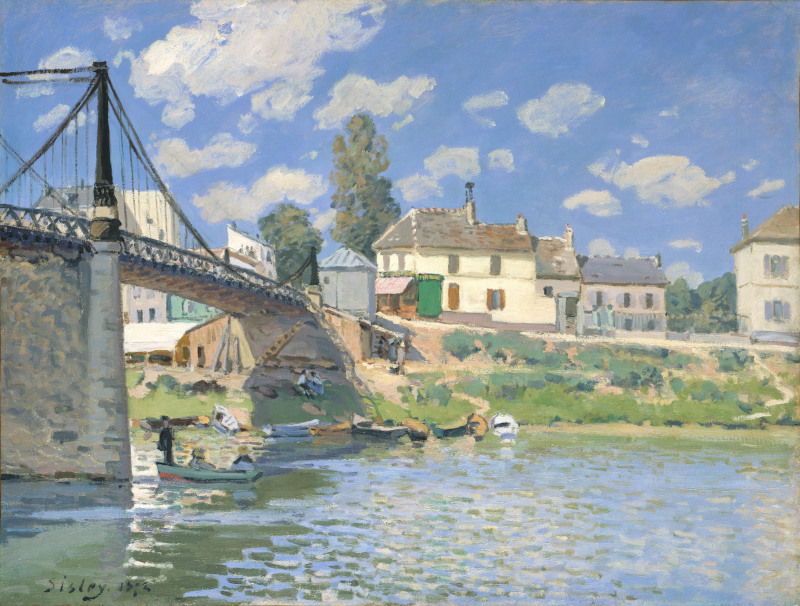 Brushwork and Composition in Impressionist Paintings - Creating Movement and Energy
Brushwork and Composition in Impressionist Paintings - Creating Movement and Energy
Impressionism and the Landscape: A New Way of Seeing Nature in Art
Landscape painting was, for many centuries, seen only as a supportive element to other artistic genres, but this was to change with the Romanticists. The Impressionist artists would then take things further, evolving the genre to include a more complex use of light and environment. It was now considered a genuine and valuable genre which could rival portrait painting and religious and mythological content.
The role of humanity within art also started to appear within painting during the Impressionist era, as well as 19th century French art more generally. Normal citizens would appear within these scenes, which was entirely rare up to that point, other than for the likes of Pieter Bruegel the Elder who stood out from the norm. The Barbizon School also regularly depicted the working poor in France at the time, and slowly we were starting to get a rounded view of life in rural France.
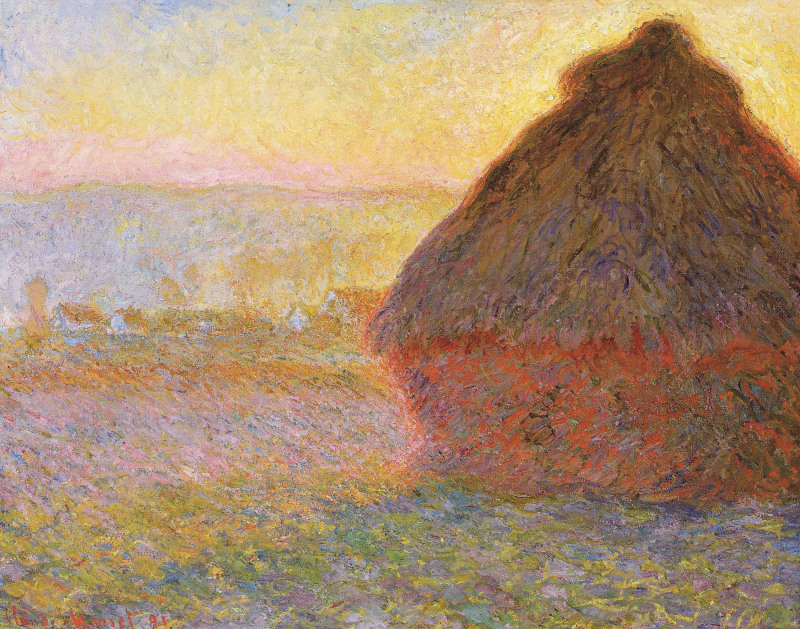 Impressionism and the Landscape - A New Way of Seeing Nature in Art
Impressionism and the Landscape - A New Way of Seeing Nature in Art
Impressionist Portraits: Capturing Personality and Emotion on Canvas
In a similar vein to its impact on landscape painting, Impressionism also greatily influenced portrait painting in allowing more of the sitter's personality to show through. A window of opportunity to express oneself allowed the artist to consider the personality of each portrait subject and to find ways to express it within the painting, rather than focusing purely on the aesthetic reproduction.
Color palettes were also brighter, incorporating tones of green, purple and blue which were derived from their landscape scenes. This allowed for more interesting portraits, and in some cases we would see figurative work combined with a landscape background to produce uplifting portraits. This was also done with a number of group paintings, with multiple figures within a garden setting, for example.
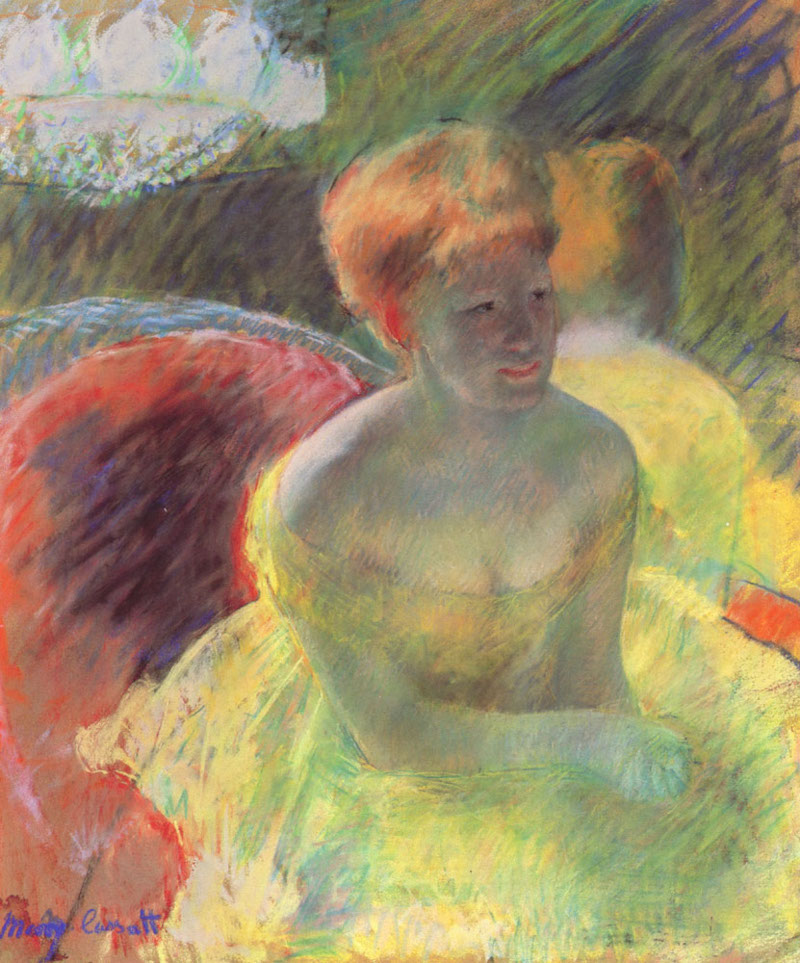 Impressionist Portraits - Capturing Personality and Emotion on Canvas
Impressionist Portraits - Capturing Personality and Emotion on Canvas
Everyday Life in Impressionist Art: Scenes from Modernity
Famous Impressionist artists helped to bring modern themes to the art world in the mid to late 19th century. Firstly, we would see women and children together in real-life scenarios for the first time, partly due to the number of female painters within the group. There would also be scenes of city life, capturing the growing wealth found in Western Europe, and the exciting times occurring in its major cities.
Holidays and leisure time were now being enjoyed by the middle classes, which was a growing section of society in France. Impressionist artists would capture their holiday pursuits, or weekend trips, such as boating on beautiful lakes or rivers, or perhaps bathing in the same environment. There would also be relaxed social occasions, such as picnics in the park.
Impressionist Women Artists: Breaking Barriers and Shaping the Movement
There were two major aspects to Impressionism which allowed the lives of women to receive a greater focus than had been seen in previous centuries. Firstly, and most importantly, it was a movement which included a large number of female painters. They brought their own perspectives on life, including their own social circles and experiences which inevitably led them to feature female portraits more regularly.
There was also a greater inclination for the male members of the group to also include women within their own paintings, perhaps being inspired by their female colleagues. Over time, we would start to see a wide and rich array of content appearing within Impressionist paintings thanks to this more diverse selection of artists and in recent years the female artists have started to receive far greater recognition for their own contributions.
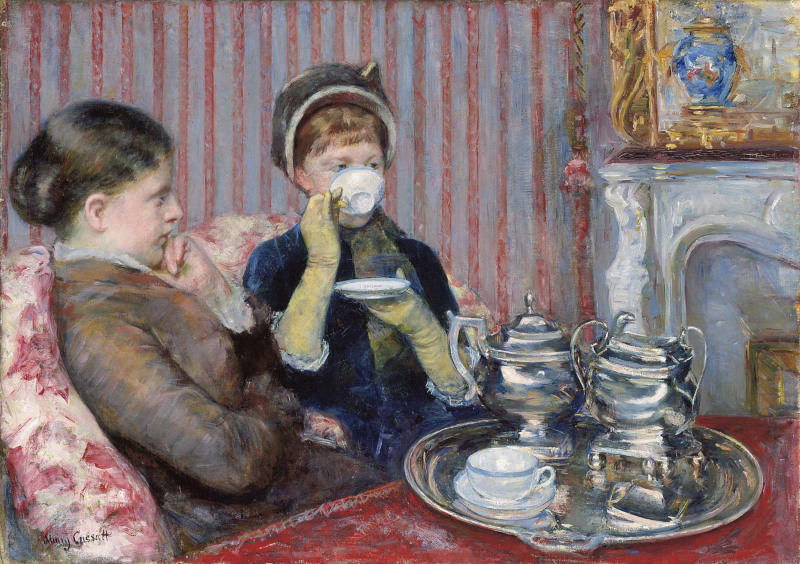 Impressionist Women Artists - Breaking Barriers and Shaping the Movement
Impressionist Women Artists - Breaking Barriers and Shaping the Movement
Impressionism Beyond France: The Global Reach of the Movement
Impressionism may have been born in France, but it would spread far beyond this region in the years that followed on after the success of Monet, Renoir, Degas et al. America seems ideally suited to its style, with its own landscape able to embrace the qualities of this new art movement. Mary Cassatt was an American herself and therefore able to help spread these ideas to her homeland, whilst Childe Hassam and James Whistler would also make significant contributions.
Australia also created an offshoot of Impressionism itself, and was equally suitable for this artistic style thanks to the abundance of light which saturates much of the country for most of the year. Joaquin Sorolla in Spain achieved considerable success and there was also movements in Italy, Belgium, and Russia which can also be connected to having their roots in French Impressionism.
Critiques and Controversies: Responses to Impressionist Art
Just as with any new art movement, Impressionism quickly came in for criticism. French institutions rejected its choice of content, as well as the technical work involved. Some considered the paintings to be unfinished, almost lazy in approach, whilst completely missing the intentions of the artists. Others were unhappy about the concentration on social occasions and landscape scenes, moving away from the traditional formula of using religious and mythological themes.
Their choices of palettes were also too bright for some, and unrealistic in the eyes of others. Art was about producing realistic depictions of reality in the eyes of some critics, and this expressive style was diverging too far from academic teaching, producing amateurish work from untrained, wild artists. In reality, it just took time for some to accept these new ideas, and eventually they would themselves become part of the mainstream.
Techniques and Materials Used by Impressionist Artists: Exploring the Tools of the Trade
Impressionist artists are most famous for their use of oils, with brighter palettes than had been seen before. In actual fact, they made use of many other mediums too, often capturing the same scenes with different formats. For example, Monet was highly skilled in the use of chalk and pastels, whilst others produced many watercolours. Some would sketch outdoors, before completing an oil version from the comfort of their own studio.
Degas found success with pastels, with many fast sketches of his ballerinas to sit alongside his more time-consuming oil versions. Impressionism was partly inspired by British Romanticist artists, who themselves were regularly sketching whilst on the move, and perhaps this was an influence on the likes of Monet. Many of these artworks have since been catalogued and carry significant valuations in their own right.
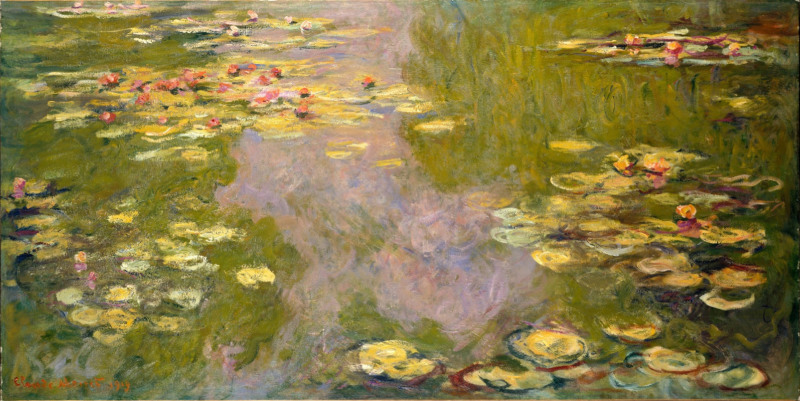 Techniques and Materials Used by Impressionist Artists - Exploring the Tools of the Trade
Techniques and Materials Used by Impressionist Artists - Exploring the Tools of the Trade
Collectors and Exhibitions: Promoting and Preserving Impressionist Art
Impressionist art was very much a niche interest in its early years, with most exhibitors rejected its paintings. However, there were a number of collectors who showed an interest, and were willing to take a chance on this group of controversial artists. Over time, interest grew and the public started to come on board, lifting the valuations of these paintings and encouraging other collectors to join in.
Eventually, Impressionist art would become the mainstream itself, dominating the same institutions who had originally derided much of this work. They would now turn their attention to newer art forms and start to criticise them instead, such as with Post-Impressionism and Expressionism.
Conclusion: The Enduring Influence and Significance of Impressionism on the Art World
The most famous Impressionists artists left a huge legacy on the art world, helping to bring a more expressive style which later led on to the modern art movements of the 20th century. Monet continues to receive most attention, but this was a group that built momentum collectively, with many skilled technicians included within its ranks. Their most famous paintings continue to remain household names today, and their style is immediately recognisable as having come from this expressive band of creative artists.
The success of the French Impressionists would spead abroad, with many international artists copying their approach and achieving their own success. American Impressionism, for example, is particularly well regarded and allowed the beauty of the US landscape to come to the fore once more, after the earlier success of the Hudson River School artists such as Thomas Cole and Albert Bierstadt.



